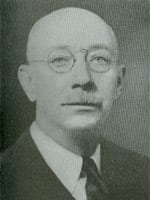Chapter 1
I don’t have anything particularly profound to say about Linchpin, but that’s partially because neither does Seth Godin. The central conceit of the first chapter is that the mode of the economy is changing and to be successful, one must change with it.
There was once a time when the better paid and most secure individuals among the working classes were artisans and craftspeople, these individuals had mastery over some necessary part of life, such as horseshoe making, or wool weaving. Then a tremendous shift took place and factories became commonplace. While machines were meant to become an extension of the individual working them, the opposite took place; human beings became the non-automated portions of machines.
This economic model gave rise to what Godin might call the recently deceased economic mode. If one were to show up and work as part of the machine for wages that were just barely acceptable, they would survive. If they were particularly polite or some small percentage more efficient, they might become a supervisor. Even white collar work is to be considered factory work because the person whose job it is to transcribe interviews is nothing more than a non-automated machine that takes sound waves and makes them into word documents. Where there is no creativity, there is no humanity in work. This mode of economy led to a race to the bottom regarding wages. If the skill was easy to teach, then the labor was easy to replace. If the labor was easy to replace, workers couldn’t go on strike if you didn’t pay them well.
The issue arose because everyone followed that model and now none of the products on the market have any heart or personality. Without some humanity to inspire loyalty in the consumer, they’re just as likely to buy your product as the next cheap option. A new force is required to inspire continued growth, and that power is linchpins.
Godin says formerly there were two types of people involved in labor, managers and laborers. Managers tell laborers what to do, laborers are non-automated machines. Linchpins are going to be the third piece in that puzzle. Situated between the manager and the laborer, the linchpin brings their creativity, their ability to come up with novel solutions to complex problems, their ability to create meaningful relationships to a business. In other words, they’re going to be Good Managers.
That’s it. Godin thinks people smart enough to read this book should be the ones who are successful in the future. Those people need to be creative and dynamic to be successful. Automation is going to grow in the future so before your job gets automated or outsourced, dazzle your boss or become your own boss and start using those skills, probably in a managerial position.
I cannot overstate my frustration with this reading. I believe that Seth Godin wants to help people, but I also believe that most of all he wants to help himself. Some of his pearls of wisdom are that the dying economic model grew because it promised people they wouldn’t have to think (rather than that if they didn’t sacrifice their humanity for wages they would starve), Karl Marx and Adam Smith agreed but neither ideology is prepared for the rise of a third piece of the manager vs. worker dichotomy, that each person with a laptop and an internet connection today has the same earning potential as a factory owner in the past, and many more.
I’ve only completed one chapter (as assigned in class) but rest assured, I’ll write more here about this gem as time goes on.





